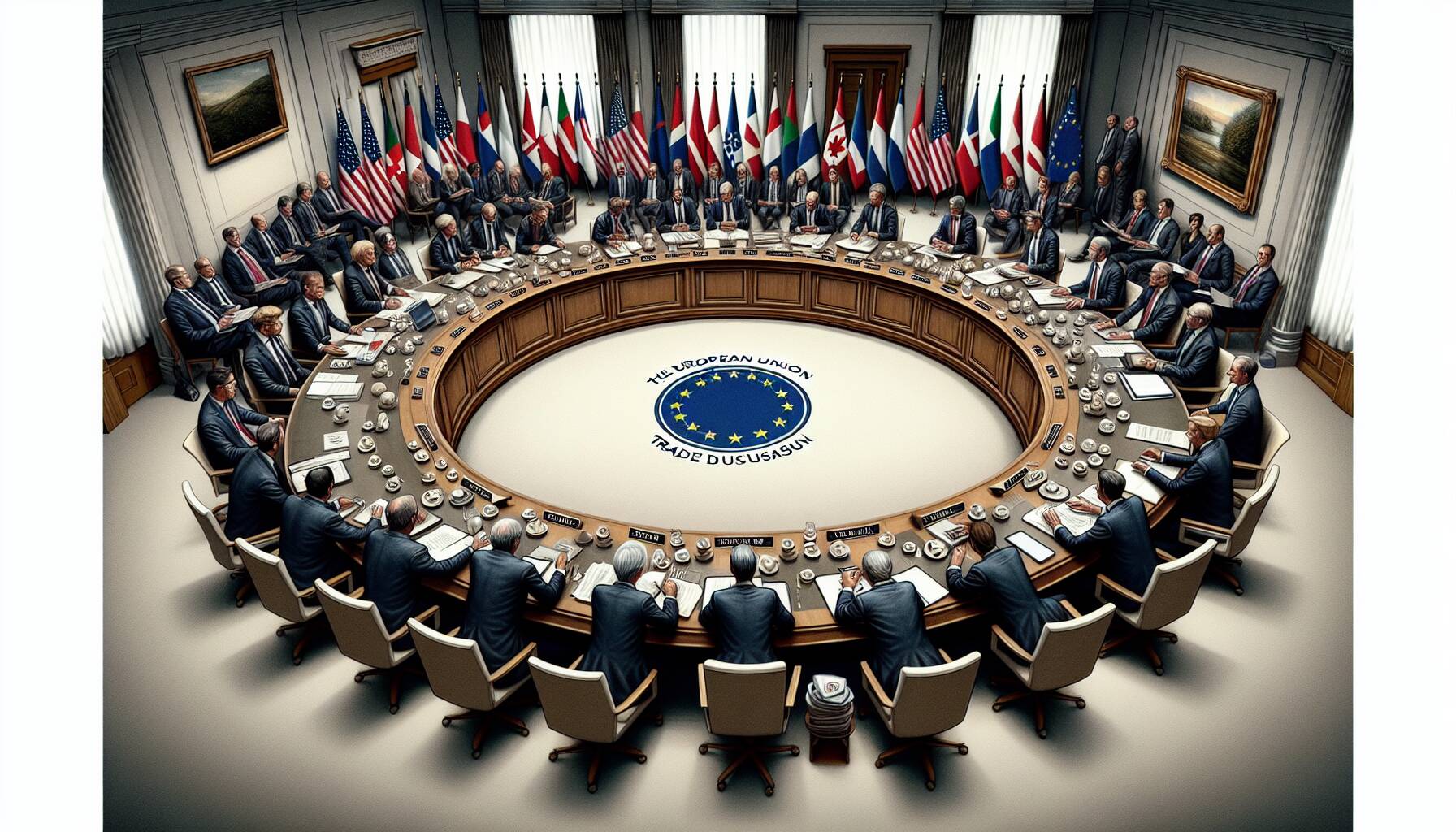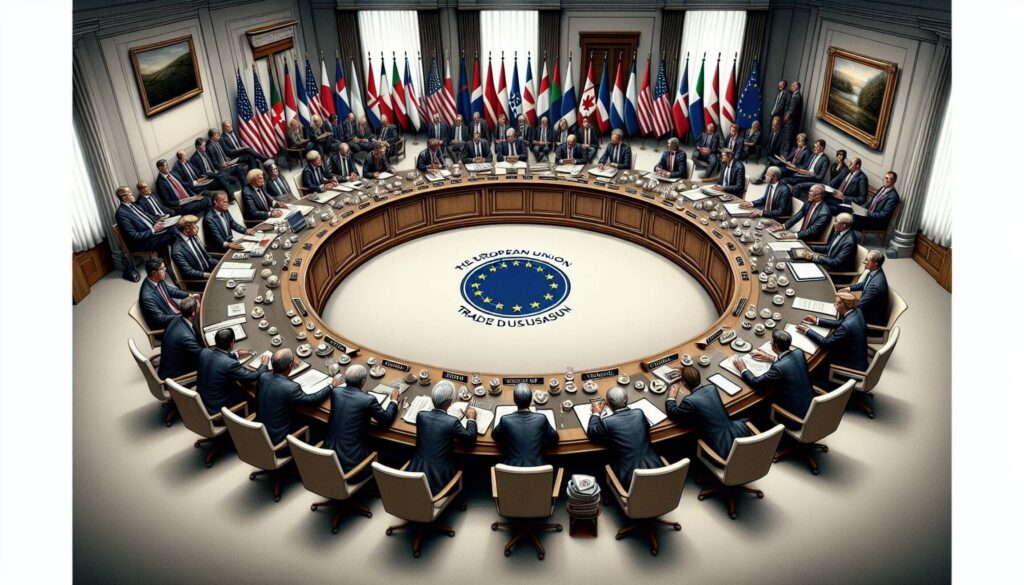The European Union is taking a significant step in response to the United States’ recent tariffs on steel and aluminum imports, unveiling plans to impose retaliatory tariffs of its own. This decision comes after the EU’s executive body, the European Commission, deemed the U.S. tariffs as “unjustified” and harmful not just to transatlantic relations but also to the global economy. The new duties are set to take effect on April 15, following the official publication of the implementing act.
In a statement from the Commission, officials expressed a desire to find a resolution without resorting to such measures, indicating that the tariffs could be suspended if the U.S. is willing to negotiate a “fair and balanced outcome.” This move illustrates the escalating trade tensions between the two regions and the complex economic landscape that companies are navigating.
“The EU considers U.S. tariffs unjustified and damaging, causing economic harm to both sides, as well as the global economy,”
The repercussions of these policy changes are already being felt in various markets, including the cryptocurrency sector. Over the past week, Bitcoin has seen a decline of approximately 8%, mirroring the downturn witnessed in traditional equity markets like the S&P 500 and Nasdaq, both of which have dropped by over 10%. The intertwined nature of global trade policies and digital currency valuations highlights the delicate balance in today’s economic environment, as traders and investors react swiftly to news that impacts market confidence.

EU Approves Retaliatory Tariffs Against the U.S.
The European Union has taken significant steps in response to U.S. tariffs on steel and aluminum. Here are the key points regarding this development:
- Approval of Tariffs: EU member states have agreed to introduce retaliatory tariffs against the United States.
- Starting Date: The tariffs are set to take effect on April 15, once the implementing act is published.
- Reason for Tariffs: This decision is a countermeasure to the U.S. imposition of tariffs on EU imports, which the EU deems unjustified and damaging.
- Economic Impact: The EU Commission highlighted that these tariffs could harm the economies of both regions and the global economy as a whole.
- Negotiation Stance: The EU prefers to avoid imposing tariffs and is open to suspending them if the U.S. agrees to negotiate a fair and balanced outcome.
- Market Reactions: Following the announcement of U.S. tariffs, cryptocurrency and equity markets have experienced significant declines, impacting major indices like the S&P 500 and Nasdaq.
“The EU considers U.S. tariffs unjustified and damaging, causing economic harm to both sides, as well as the global economy.” – European Commission
These developments impact readers by illustrating the interconnectedness of global trade and economics. Increased tariffs can lead to higher prices for imported goods, potential job losses in affected industries, and a ripple effect through the stock market, which may influence individual investments and retirement savings.
EU’s Tariff Retaliation: A Double-Edged Sword in Trade Relations
The European Union’s recent decision to impose retaliatory tariffs against the United States clearly reflects ongoing tensions in international trade. In this strategic move, the EU aims to counteract the impact of U.S. tariffs on steel and aluminum imports. While this action could fortify the EU’s position in this escalating trade dispute, it carries both advantages and disadvantages for various stakeholders involved.
Competitive Advantages: By implementing these tariffs, the EU not only sends a strong message about its commitment to fair trade but also aims to protect its domestic steel and aluminum industries. This could lead to a surge in demand for local products, potentially stimulating job growth and local economies. Additionally, the EU’s willingness to negotiate could indicate diplomatic strength, as it positions itself as a player open to fair dialogue, contrasting sharply with the more aggressive tactics seen from U.S. leadership. This approach may appeal to global audiences that favor coalition-building over confrontation.
Disadvantages: However, these retaliatory measures come with significant risks. For one, they could exacerbate trade tensions, leading to a tit-for-tat escalation that harms industries on both sides of the Atlantic. European consumers might face higher prices for goods affected by these tariffs, and businesses relying on imports may experience increased operational costs. The EU’s dependency on exports makes it vulnerable to retaliatory moves by the U.S., which could lead to a downward spiral in trade relations.
Beneficiaries and Those Affected: The main beneficiaries of the EU’s retaliatory tariffs are likely to be local steel and aluminum manufacturers who may enjoy enhanced protections from foreign competition. These tariffs may also generate political support for EU leaders aiming to show strength against U.S. policies. Conversely, the broader European economy might face turbulence, particularly in sectors reliant on imported materials or those engaged in trade with American partners. Investors in financial markets may experience instability, as exemplified by recent tumbling equity prices linked to trade fears. This intricate balance of winners and losers highlights the complexities of modern trade relations.

















